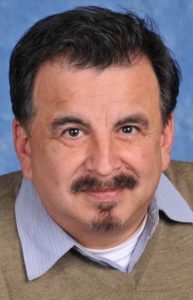By James Rojas, November 14, 2020
Community engagement is a big business. It can be part of a formal planning process every few years when formal, adopted plans are updated. But community engagement happens all the time through organizing. If we are to build trust between our communities and the governments that provide their services, we planners need to learn how to bridge the gap between our formal, infrequent engagement and the ongoing community organizing.
As a Latino, I find traditional urban planning community meetings disingenuous at best, confusing or contentious at worst. I believe community engagement needs to celebrate people, lift their spirits, and remove any doubt the participants, especially Latinos, might have about government and planning.
Most of my collaborators are women of color who have a genuine concern for the wellbeing of their community. They want a social, collaborative approach to planning. Some want what we call community visioning. Others want to organize around environmental issues in the community.
Many of these people have been left out of the formal planning processes of municipal governments and private consulting firms. In too many places, their issues, concerns, and voices have never been heard.
If we, as planners, want these communities to trust us in what we propose, we have to share our planning power or concede it. We need to be there, in and with the communities we represent and serve. That means we cannot appear every five to seven years. Instead, we have to build the planning capacity of our communities, lift them up, and encourage their interest and involvement, if not self-determination.
I argue that solely using words is a very limited way of understanding place and planning for communities. We need to expand our toolkit beyond words to feel the essence of communities and capture the nuances that create great places.
To sum up, as Al Zelinka, the Riverside City Manager and a colleague on the California Planning Roundtable stated, “Civic engagement should be a conduit for community building through shared vision, shared responsibility, and shared benefits.”
We also need to trust communities to undertake their own community engagement, and share problem solving with community members.
An example of power-sharing is the East Oakland Neighborhoods Initiative, a partnership between the City of Oakland Planning Bureau and 12 community-based organizations focused on equity-based planning for deep East Oakland. The community organizations conducted a year of outreach to identify the primary concerns, goals, and priorities of East Oakland residents and stakeholders.
 James Rojas is an urban planner, community outreach specialist, and artist with Place It! He holds an MCP from MIT and a B.S. in interior design from Woodbury University. You can reach him at jamestrojas@gmail.com.
James Rojas is an urban planner, community outreach specialist, and artist with Place It! He holds an MCP from MIT and a B.S. in interior design from Woodbury University. You can reach him at jamestrojas@gmail.com.

